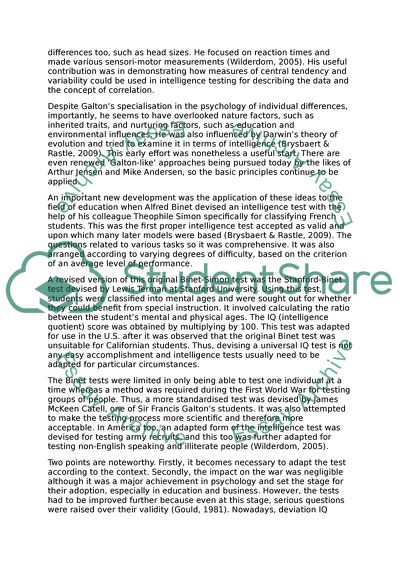Cite this document
(Psychological Intelligence Tests Coursework Example | Topics and Well Written Essays - 2000 words, n.d.)
Psychological Intelligence Tests Coursework Example | Topics and Well Written Essays - 2000 words. Retrieved from https://studentshare.org/psychology/1749895-critically-discuss-the-historical-and-conceptual-development-of-intelligence-tests-in-psychology
Psychological Intelligence Tests Coursework Example | Topics and Well Written Essays - 2000 words. Retrieved from https://studentshare.org/psychology/1749895-critically-discuss-the-historical-and-conceptual-development-of-intelligence-tests-in-psychology
(Psychological Intelligence Tests Coursework Example | Topics and Well Written Essays - 2000 Words)
Psychological Intelligence Tests Coursework Example | Topics and Well Written Essays - 2000 Words. https://studentshare.org/psychology/1749895-critically-discuss-the-historical-and-conceptual-development-of-intelligence-tests-in-psychology.
Psychological Intelligence Tests Coursework Example | Topics and Well Written Essays - 2000 Words. https://studentshare.org/psychology/1749895-critically-discuss-the-historical-and-conceptual-development-of-intelligence-tests-in-psychology.
“Psychological Intelligence Tests Coursework Example | Topics and Well Written Essays - 2000 Words”. https://studentshare.org/psychology/1749895-critically-discuss-the-historical-and-conceptual-development-of-intelligence-tests-in-psychology.


